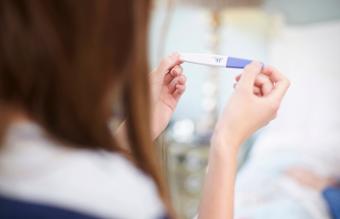
Many women who need assisted reproductive techniques will start with an IUI procedure. This out-patient treatment is much less invasive than in vitro fertilization.
IUI for Infertility
Many doctors recommend that women have an IUI procedure if trying at home doesn't work for several months. A woman under age 35 might be encouraged to try for up to 12 months before being treating for infertility, while an IUI may be considered after just six months for a woman over 35.
One of the factors determining whether or not a woman is a candidate for IUI depends on the reason for her fertility problems. IUI is best for women who are able to ovulate, whether on their own or with medication, and have open fallopian tubes. IUI may also be used in cases where the male has lower sperm motility since the process of preparing the sperm for the IUI procedure ensures that only better quality sperm is used. The procedure itself places the sperm higher up in the uterus than normal intercourse does, so the sperm will also get a head start on their journey.
If a woman's cause of infertility is unknown, an IUI may still be performed as a basic first-step in fertility treatments.
IUI Procedure
The actual IUI procedure is quick and relatively painless, though there may be some discomfort. After the sperm is collected, checked, and washed, it is placed in a thin catheter about six inches long. The vagina is opened using a speculum, which is the same device used during a pelvic exam. After the catheter is inserted, the sperm is injected directly into the cervix or uterus. The entire procedure usually takes less than five minutes.
After the speculum and catheter are removed, the cervix closes on its own and prevents any sperm from falling back out, a big concern among many women having the procedure.
Some fertility doctors recommend that women lie on their backs for 10-15 minutes following the IUI as an extra precaution, but others don't see any need to do this.
Variations of IUI
The actual IUI procedure is pretty straightforward but the techniques leading up to the insemination vary greatly between fertility clinics. There are three main options for an IUI cycle:
- Natural cycle: This is the most basic of IUI procedures. Insemination is planned for somewhere between day 12-15 of the cycle and uses the woman's natural ovulation period. Predictor kits may also be used to ensure that ovulation is about to happen. Once a woman knows that she is about to ovulate, she goes in to the clinic for insemination.
- Clomid-assisted cycle: Women who don't ovulate regularly on their own or who don't have a strong enough hormone surge to support conception may be prescribed Clomid. This medication helps a woman ovulate, though it may also increase her chances of having multiples. Clomid produces stronger, predictable ovulation, but it also has several side effects, such as cramping and headache. Post-ovulation ultrasounds are necessary to make sure the ovaries haven't been overstimulated.
- Monitored cycle: Another approach to timing an IUI procedure is to watch the ovaries via ultrasound a few days before ovulation is expected. Once at least one mature follicle develops, the IUI is planned for the next day. Often, an injection of the HCG hormone precedes the procedure to trigger the complete ovulation of the egg.
Success of IUI
Success rates of IUI procedures vary greatly. Most studies show the conception rate to be between 10 and 20 percent. This is not much higher than the chances of natural conception at home, but it is often seen as a first step in trying to conceive after several well-timed attempts have failed.
Pros and Cons of IUI
Like every assisted reproduction technique, there are pros and cons to be considered. If a woman has a blockage in her tubes, the IUI procedure will not work. Since a woman can have a blockage without realizing it, she could be using up resources and time trying a method that has no chance of working. IUIs can also be difficult to time appropriately if a woman has an irregular cycle. She will need to either monitor her ovulation almost daily or take medication to ensure she ovulates on time.
One of the biggest benefits to IUI is that the sperm being used is washed first, thereby increasing the viability of the sample. Since it is placed further in, it also reduces low motility issues.
Although an IUI procedure may not increase a woman's chances of conceiving by much, it is still the first recommended course of action for fertility treatments.







